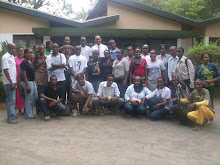Kibondo is one of the three districts of Kigoma region which is located (4º, 07’S, 31º, 00’E) in Northern part of the region and western part of Tanzania. According to the 2002 Tanzania National Census, the population of Kibondo District was 414,764 and is administratively divided into 20 wards. The district is bordering the neighboring country of Burundi, Kigoma and Kasulu districts in Tanzania. It covers a total land of 16,058 Km2 which is equivalent to 43.3% of total kigoma region land area. The district is covered with large woodland in the two established forest reserves. Of the total forest areas 508,672 hectares fall under open public forests. Those open forests have various valuable tree species such as Pterocarpus angolensis (Mninga), Khaya nyasica (Mkangazi), Afzelia quanzensis (Mkora), Milecea- exelsa (Mvule), and Brachystegia spiciformis (Mtundu).
The currently threats facing forest management in Kibondo district include unsustainable agriculture practices, particularly extensive shifting cultivation, illegal harvesting and trade in timber and creation of new settlements which results into fragmentation and loss of natural forests as they are converted into field. Those proximate stress are linked to higher level processes particularly poverty, in all of its multiple interrelated dimensions, including a lack of education and training opportunities, which results in a dependence on natural resource-based livelihoods. Also the district has experienced the greatest upsurge in deforestation and forest degradation over the past twenty years due to the most serious influx of refugees from Burundi, Rwanda and Democratic republic of Congo (DRC). The existing baseline data on new settlements and houses constructed by local people in Kibondo district reveal that 95% depend on forest products (poles, grasses and trees). From the national development perspective, this area represents one of the poorest districts in Tanzania and most rural livelihoods are heavily dependent upon land use and forestry resources. 97% of the population in Kibondo district depends on agriculture and district is undergoing different activities including bricks baking, and burning farms for cultivation, cooking greatly contribute to increase of greenhouses gases emissions. Generally the search of alternative sources of livelihood such as charcoal burning, illegal logging and collection of firewood has further exacerbated environmental degradation within such a district which ultimately resulted into the current climate change happening in the world.
Note: The present article is drawn from my consultant work assigned by GLIRT a non-governmental organisation, on preparing a concept note paper of REDD and submitted to Institute of Resources Assessment (IRA) of University of Dar es salaam and Royal Norwegian Embassy in Tanzania.
Stephen J Nyagonde
National Representative
Young Earth Scientist Network- Tanzania,
Internship WWF Tanzania Office,
Rubeho Environmental Action Project-REAP,
Tanzania Forest Conservation Group (TFCG),
Rubeho, Mpwapwa, Dodoma,
Email: stnya19@yahoo.com, snyagonde@gmail.com
Mobile: +255713058745, +255765111101
Subscribe to:
Post Comments (Atom)


ReplyDeletedo you want to study in abroad today or in the next intake. we are the best and top rated study abroad consultancies in india with good visa assurance.we
overseas education consultants in hyderabad for usa help you in filing the f1 visa for you in very less time. we are also help you with information needed to apply for the college university.